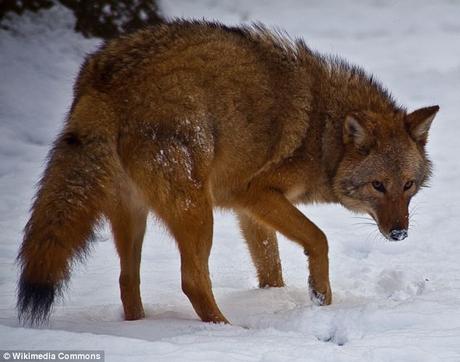 Sure we know Lions, Tigers, Cheetahs,
Leopards, Panthers and more jungle animals …. heard of Tigon, Ligers an the
like….. Tigon is a sterile hybrid cross between a male tiger (Panthera tigris)
and a lioness (Panthera leo). The tigon is not currently as common as the
converse hybrid, the liger. Tigons will have the characteristics of both
biological parents – they can have spots from mother and stripes – also the
mane of the father. The liger is a hybrid cross between a male lion
(Panthera leo) and a tigress (Panthera tigris). Liger is reported to be much
bigger than its parents, largest of all known felines; enjoy swimming ~ a trait
of Tigers and are sociable like lions. Ligers exist only in captivity because
the habitats of the parental species do not overlap in the wild. Historically,
when the Asiatic Lion was prolific, the territories of lions and tigers did
overlap and there are legends of ligers existing in the wild.
Sure we know Lions, Tigers, Cheetahs,
Leopards, Panthers and more jungle animals …. heard of Tigon, Ligers an the
like….. Tigon is a sterile hybrid cross between a male tiger (Panthera tigris)
and a lioness (Panthera leo). The tigon is not currently as common as the
converse hybrid, the liger. Tigons will have the characteristics of both
biological parents – they can have spots from mother and stripes – also the
mane of the father. The liger is a hybrid cross between a male lion
(Panthera leo) and a tigress (Panthera tigris). Liger is reported to be much
bigger than its parents, largest of all known felines; enjoy swimming ~ a trait
of Tigers and are sociable like lions. Ligers exist only in captivity because
the habitats of the parental species do not overlap in the wild. Historically,
when the Asiatic Lion was prolific, the territories of lions and tigers did
overlap and there are legends of ligers existing in the wild.
While zoos in some countries do cross-breed cats (probably for the publicity value), most famous zoos may not. There are some associations which do not approve of such hybrid methods and instead focus only on wildlife-conservation programs. Anyway, there are Ligers and they do grow very fast ~ by 3 years of age they can weigh over 320 kg. A liger inMiamicalled Hercules is the biggest cat in the world. He weighs over 410 kg. If that was confounding, there is also “Liliger ”– not one but three of them born at a zoo inNovosibirsk,Russia. As you could make out from the name – liliger is hybrid of a lion and a liger.
In general, the hybrid animals are sterile and would not have progeny –What we considered as cattle – buffaloes and cows would never produce a hybrid offspring. This post is about the 'coywolf' [seen at the start of this post] a hybrid of a wolf and a coyote which is taking over the northeast of the U.S. In Aug 2014, Daily Mail wrote about spotting of the wild animalroaming around West Virginia and in the land north of the Great Lakes – it is an animal having 1/4 wolf DNA, 2/3 coyote DNA and the rest is from dog. The coywolf can be 40 per cent larger than the Western coyote, with powerful wolf-like jaws. Over the past decade, the coywolf has emerged after wolves were hunted and forced north and coyotes moved east from the Great Plains. The animal's wolf genes allow the coyote to take down bigger prey, whilst its coyote genes let them adapt to built-up areas. The new species of predator which is a hybrid of a wolf and an Eastern coyote was nicknamed a 'coywolf,' by scientists for its unique DNA.The wild animal has been spotted roaming around West Virginia and the land north of the Great Lakes and was created after humans forced two species to live closer together and mate. Genetically, the gray wolf, picture here, and the coyote are close relatives but the two animals separated evolutionarily one to two million years ago !These animals have a completely new genetic make-up and were created when previously separate wolf and coyote populations merged north of the Great Lakes.However, the coywolf is well suited to its habitat. According to The New York Times: ‘The coywolf can be as much as 40 per cent larger than the Western coyote, with powerful wolf-like jaws.’It has also inherited the wolf's more social nature, which allows for pack hunting.Both animals benefit from each other’s genes.The wolf genes allow the coyote to take down bigger prey, while the coyote genes allow them to adapt to cities.Scientists have been studying the new bred of animal to learn more.They made 50/50 hybrids in a laboratory and allowed female coyotes to mate with gray wolves to try and emulate the coywolves genetic base.There were two failed pregnancies and one litter of six puppies.And the hybrids appeared to be better at dealing with hard times.For example, when food is sparse, they'll forage for it, adapting to changing situations. Altogether, they tend to do better than their parent species who are not hybrids.Scientists suggest that the emergence of the coywolves, illustrates how human activity often takes away the barriers that separate species. Another huge factor is the effect that climate change is having on animals' natural habitats. The Arctic is warming between two and four times as fast as the rest of the planet forcing animals’ natural habitats to change. As they move, it can lead to more interbreeding. With regards – S. Sampathkumar
2nd Nov. 2015

